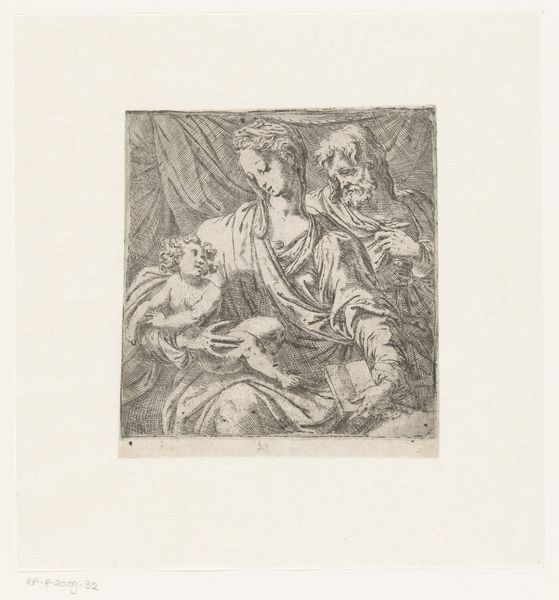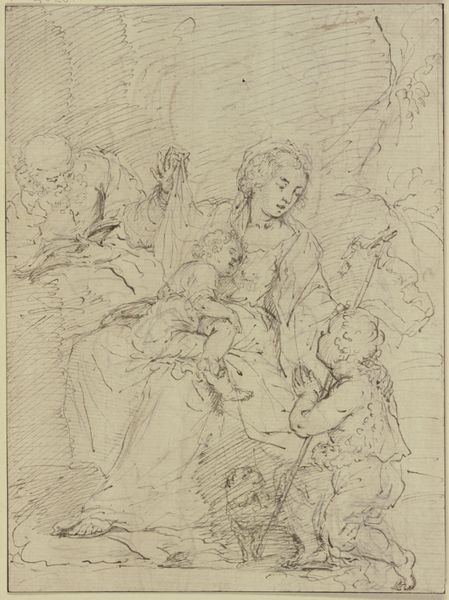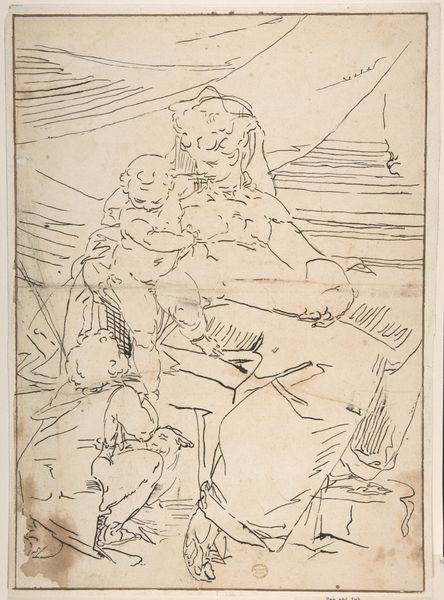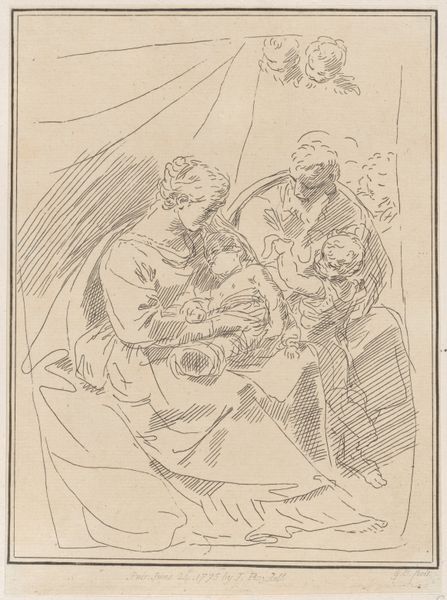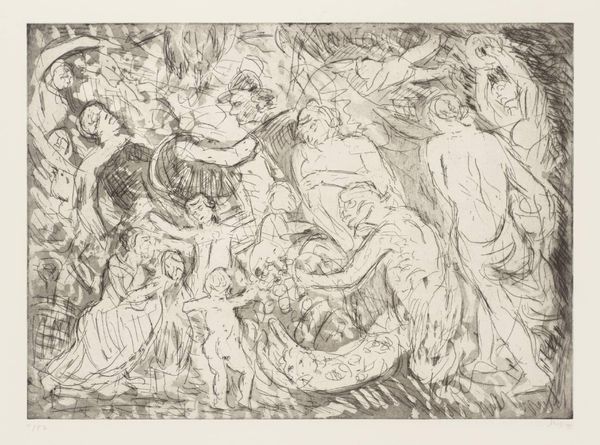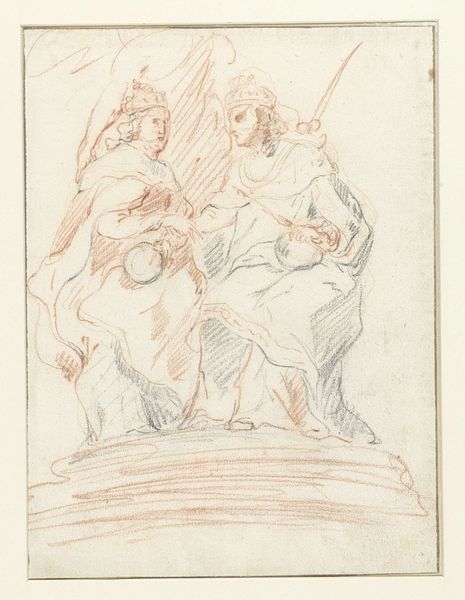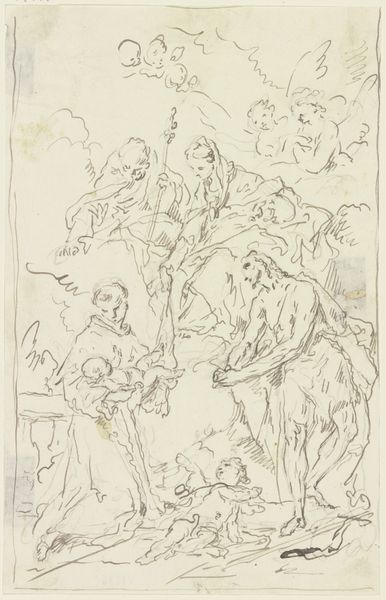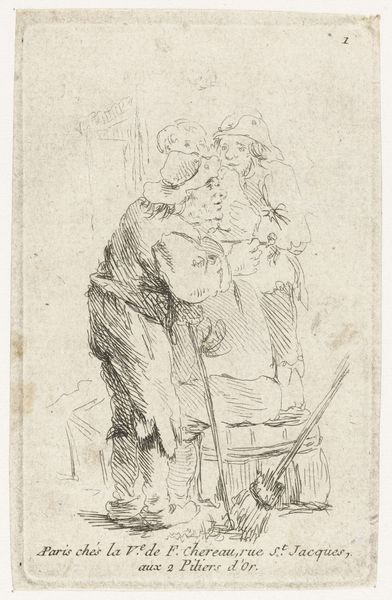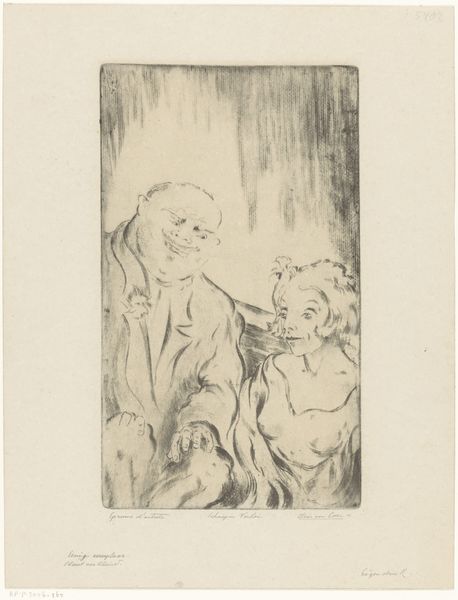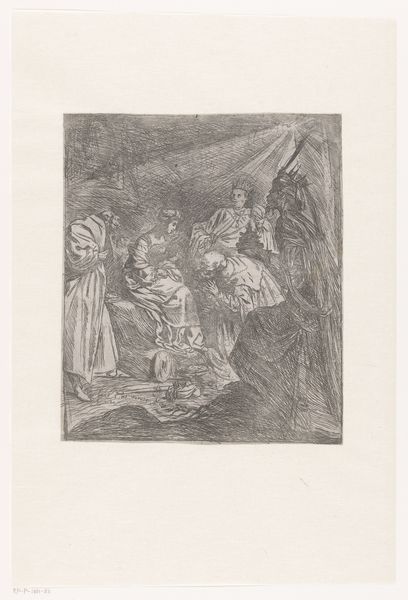
Aanbidding van het Christuskind door man met geschenk 1821 - 1879
0:00
0:00
drawing, print, etching
#
drawing
#
narrative-art
# print
#
pen illustration
#
etching
#
figuration
#
history-painting
Dimensions: height 204 mm, width 174 mm
Copyright: Rijks Museum: Open Domain
Editor: This is "Adoration of the Christ Child by a Man with a Gift," an etching from the 19th century by Isaac Lambertus Cremer van den Berch van Heemstede. The scene feels both intimate and formal at the same time, maybe because of the etching style. How do you interpret this work in terms of its historical context and the message it conveys? Curator: Considering the artist's context—a 19th-century nobleman—it's intriguing to view this seemingly conventional religious scene through a lens of power and privilege. This isn't merely a depiction of piety; it's a demonstration of social standing interwoven with religious narrative. Think about the implications of who is offering the gift, and to whom. What does that gesture communicate about societal hierarchies of that time? Editor: I never thought about it that way, I was too focused on the holy family. Does the style of etching, with its fine lines and precise details, contribute to this sense of formality and perhaps even control? Curator: Precisely. The controlled lines of the etching reflect the artist's, and perhaps the patron's, desire for order and clarity. The detailed depiction allows for close examination, almost demanding that the viewer acknowledge the artist’s skill, thereby subtly reinforcing his position within the social hierarchy. This intersects with broader narratives surrounding religious art, particularly within the context of wealth and patronage. How does situating the work within these complex social and political narratives help us understand the art itself? Editor: So, the "Adoration" isn't just about religious devotion; it also reflects the social power dynamics of the time. It’s like the artist is making a statement about his place in society through a biblical scene. I am definitely looking at it differently now. Curator: Exactly. And this is how art becomes a mirror reflecting not only faith but also the multifaceted realities of identity, race, gender, and power that shape our world. Editor: Thank you; I never really thought about art this way before.
Comments
No comments
Be the first to comment and join the conversation on the ultimate creative platform.

